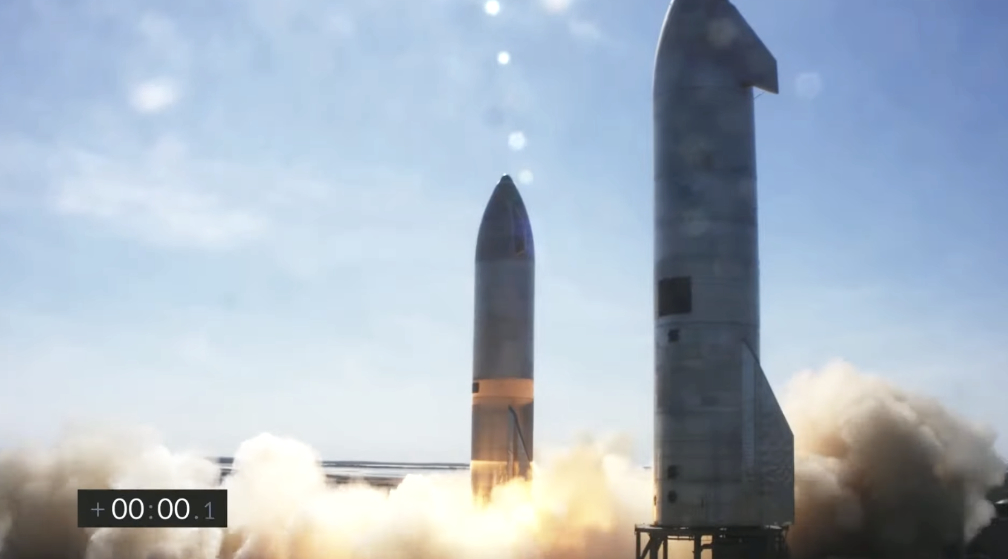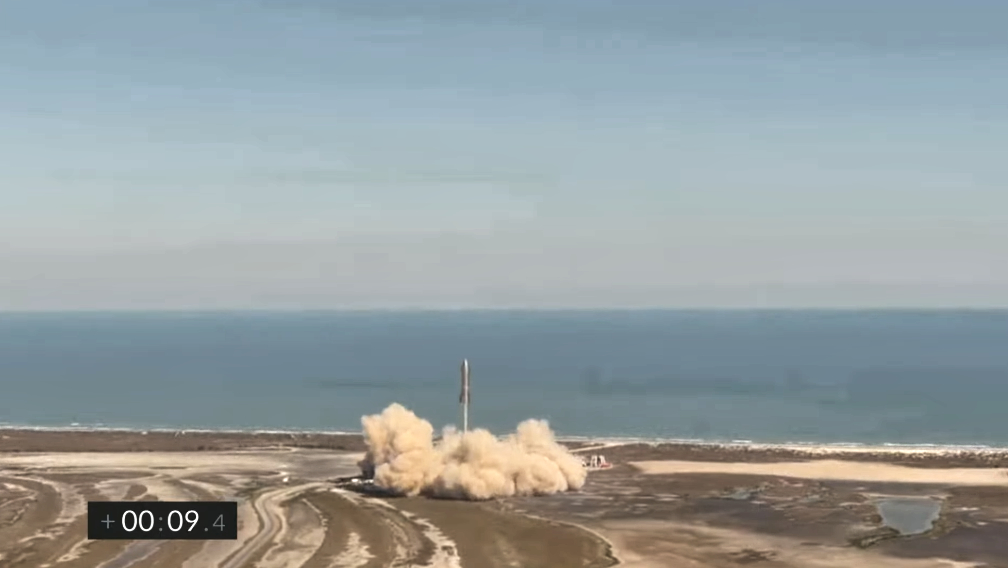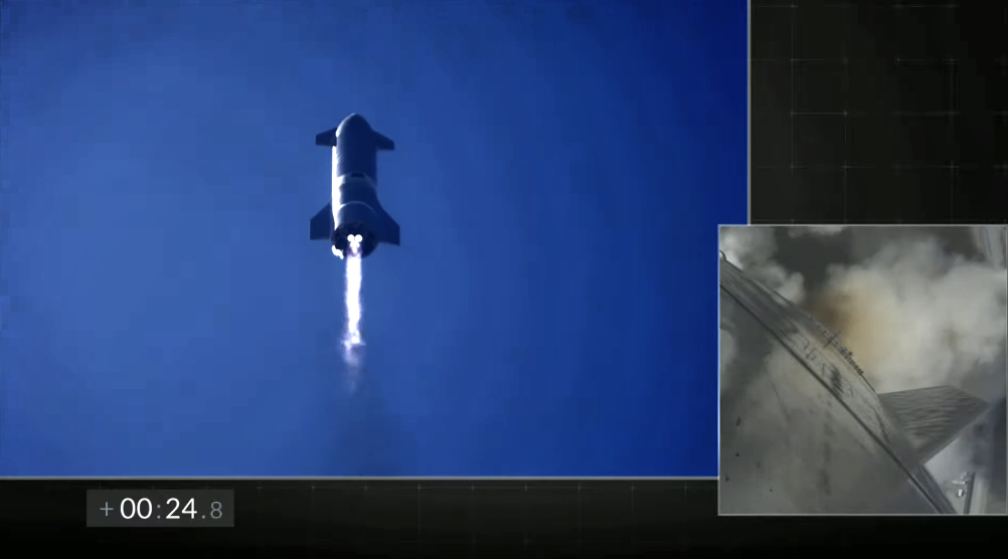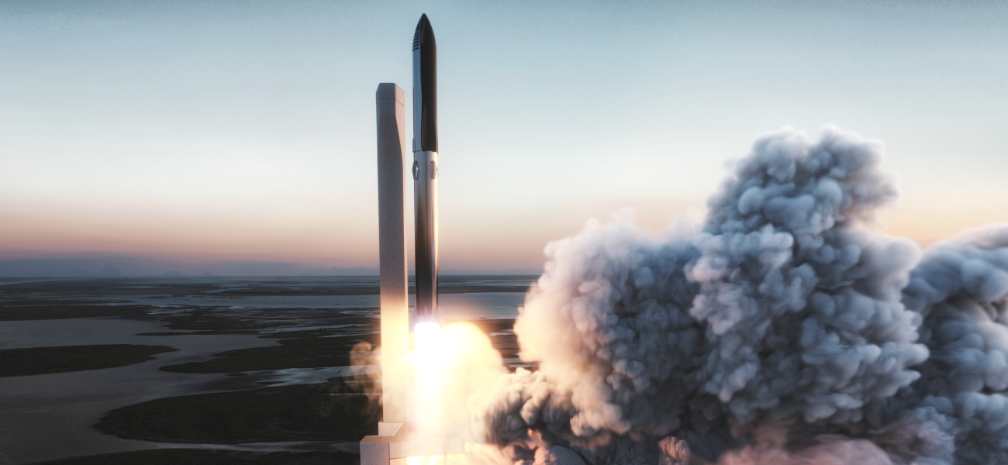
On Tuesday, February 2, Starship serial number 9 (SN9) completed SpaceX’s second high-altitude flight test of a Starship prototype from the SpaceX site in Cameron County, Texas.
Similar to the high-altitude flight test of Starship serial number 8 (SN8), SN9 was powered through ascent by three Raptor engines, each shutting down in sequence prior to the vehicle reaching apogee – approximately 10 kilometers in altitude.

SN9 successfully performed a propellant transition to the internal header tanks, which hold landing propellant, before re-orienting itself for re-entry and a controlled aerodynamic descent.
The Starship prototype descended under active aerodynamic control, accomplished by independent movement of two forward and two aft flaps on the vehicle. All four flaps are actuated by an onboard flight computer to control Starship’s attitude during flight and enable precise landing at the intended location.

During the landing flip maneuver, one of the Raptor engines did not relight and caused SN9 to land at high speed and experience a RUD (that’s what SpaceX CEO Elon Musk calls a “rapid unscheduled disassembly).
These test flights are all about improving the understanding and development of a fully reusable transportation system designed to carry both crew and cargo on long-duration, interplanetary flights and help humanity return to the Moon, and travel to Mars and beyond.
Watch the entire SN9 launch video at this direct link…
Original news story…

As early as, now, Tuesday, February 2, the SpaceX team will attempt a high-altitude flight test of Starship serial number 9 (SN9) – the second high-altitude suborbital flight test of a Starship prototype from the company’s launch site in Cameron County, Texas.
Similar to the high-altitude flight test of Starship serial number 8 (SN8), SN9 will be powered through ascent by three Raptor engines, each shutting down in sequence prior to the vehicle reaching apogee – approximately 10 km in altitude. SN9 will perform a propellant transition to the internal header tanks, which hold landing propellant, before reorienting itself for reentry and a controlled aerodynamic descent.
The Starship prototype will descend under active aerodynamic control, accomplished by independent movement of two forward and two aft flaps on the vehicle. All four flaps are actuated by an onboard flight computer to control Starship’s attitude during flight and enable precise landing at the intended location. SN9’s Raptor engines will then reignite as the vehicle attempts a landing flip maneuver immediately before touching down on the landing pad adjacent to the launch mount.
A controlled aerodynamic descent with body flaps and vertical landing capability, combined with in-space refilling, are critical to landing Starship at destinations across the solar system where prepared surfaces or runways do not exist, and returning to Earth. This capability will enable a fully reusable transportation system designed to carry both crew and cargo on long-duration, interplanetary flights and help humanity return to the Moon, and travel to Mars and beyond.
There will be a live feed of the flight test available that will start a few minutes prior to liftoff. Given the dynamic schedule of development testing, stay tuned to the company’s social media channels for updates as all get ready for SpaceX’s second high-altitude flight test of Starship.

